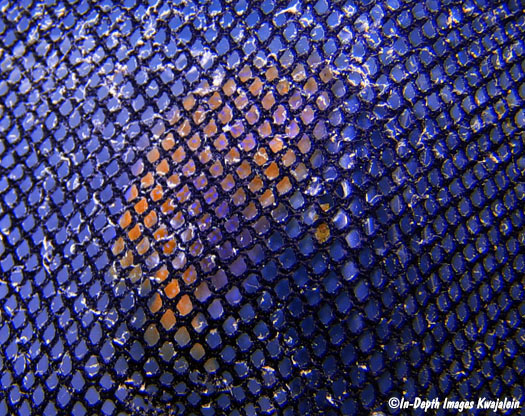
I know it is not easy to see anything in this photo. We have never seen this fish swimming freely on the reefs at Kwajalein. One day while diving the seaward reef slope, I came upon a decompression basket for fish tied to the reef. Many fish have an internal gas bladder for maintenance of neutral buoyancy. The gas in the bladder can adjust for different depths, but sometimes adjustment takes place slowly, and if a fish comes too shallow too quickly, the gas in the bladder can expand faster than it can be released, damaging the fish's internal organs. Commercial aquarium fish collectors often decompress a fish by leaving it at decompression stops to gradually get shallower and give the gas bladder time to adjust. There were commercial fish collectors working out of Ebeye Island, and I suspect the decompression basket I found was one of theirs. While not easy to see through the fine mesh basket, most of the fish inside were easily recognizable. This one, however, was not. While I was tempted to open it up for a closer look, it is not polite to mess with someone else's decompression line, so I satisfied myself with this photo through the mesh. It was a little easier to see with the naked eye, and the fish appeared to be the Japanese pygmy angelfish Centropyge interrupta, known from Japan and the northwestern Hawaiian Islands of Midway and Kure. Those areas have cooler water than Kwajalein, so perhaps there is a Marshall Islands population in deeper, cooler water. I don't know how deep the fish collectors found this fish, but we have not seen any to at least 60m at Kwajalein.

Created 27 March 2017